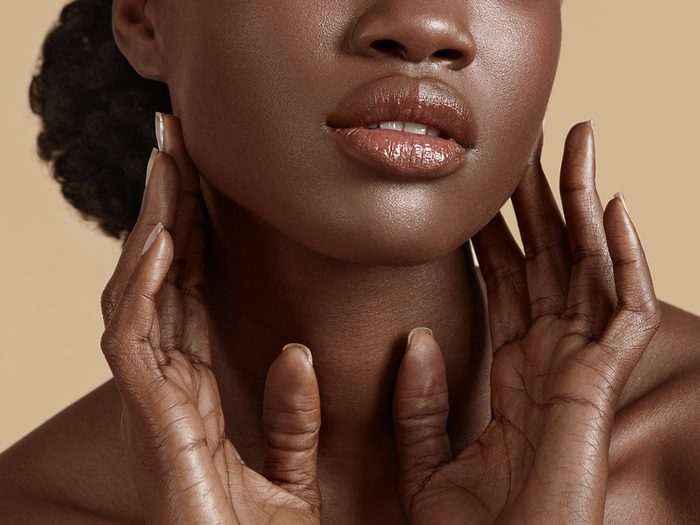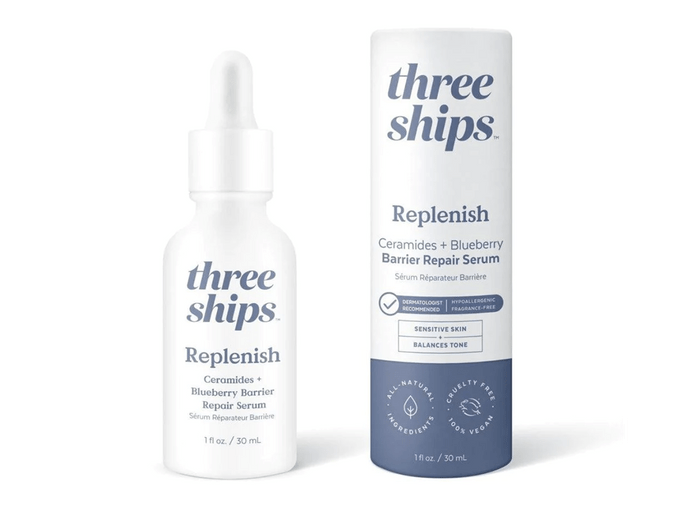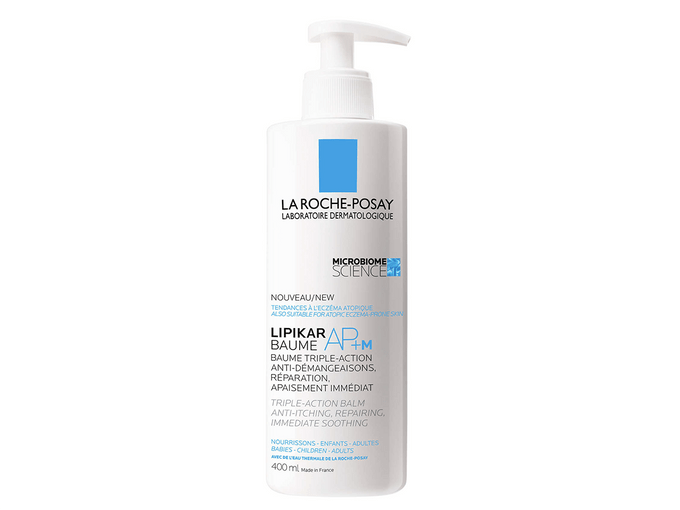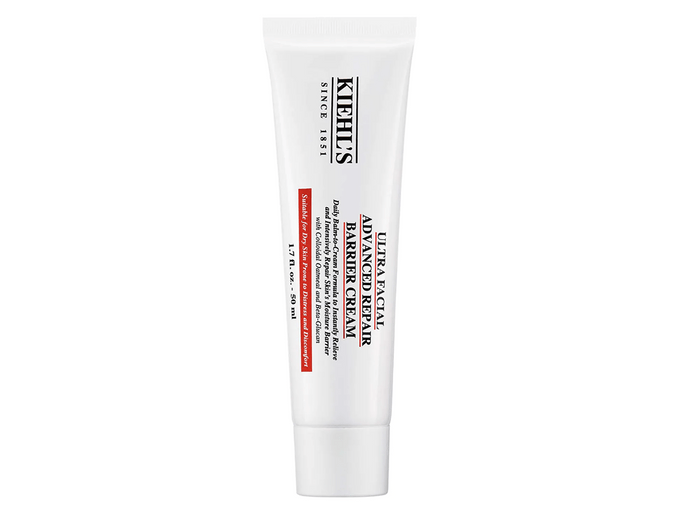How’s Your Skin Barrier Doing? (Here’s How to Know)

Hint: If your skin is red, flaky, dry, sore or itchy, your skin barrier may be damaged.
On a recent trip to a Sephora store, I was greeted by a sign with the words, “Support skin barrier.” It’s messaging that joins a recent spate of new serums, moisturizers and cleansers all geared towards maintaining, protecting or repairing your skin’s barrier. However loosely you follow skin-care trends, chances are you’ve noticed that this is the latest mission-critical. And it’s left many wondering—this beauty writer included—just what exactly the skin barrier is, and why it’s in need of such support.
Sometimes referred to as the moisture barrier, the skin barrier is another term for the stratum corneum, the outermost layer of the skin. It’s about as thick as a single strand of hair and is the first layer of defense in protecting your skin and your body from the external environment. Toronto-based dermatologist, founding director of the Bay Dermatology Centre and assistant professor at the University of Toronto Dr. Sandy Skotnicki likens the stratum corneum to a brick wall, with the cells being the bricks and the natural oils and ceramides being the mortar. “When you damage your skin barrier, you’re damaging that brick wall. Usually the mortar, which is the natural lipids, are removed,” Skotnicki explains. One common example is when a soap molecule bonds with not only the surface grease you’re trying to remove but also with the skin’s lipid molecules, removing those lipids and leaving holes in the stratum corneum’s brick-and-mortar.
A skin barrier that’s been damaged may demonstrate visual cues like redness and flakiness or sensations like dryness, burning and itching. A minorly damaged skin barrier may not display any symptoms at all. However, this damage can still lead to negative consequences for the skin like inflammation by allowing more UV light and pollution to penetrate the skin’s deeper layers.
There is a litany of ways the skin barrier can become weakened, and it’s not just aggressive cosmetic treatments like weekly chemical peels or nightly retinol applications that are doing you dirty. Skotnicki explains that everything from soap to hot water and even wind can weaken your barrier. “I don’t think the general public knows that the act of washing yourself damages your skin barrier,” Skotnicki says. “Your skin barrier is always [getting] messed up, every time you wash your face. It’s a constant thing.” It’s a phenomenon she examines at length in her 2018 book Beyond Soap: The Real Truth About What You Are Doing to Your Skin and How to Fix It for a Beautiful, Healthy Glow.
To help keep your barrier in tip-top shape, Skotnicki says that moisturizing is the first step. And while all moisturizers will support your skin barrier to some degree, those displaying obvious signs of a weakened barrier (redness, irritation, flaking et cetera) or having skin diseases like eczema, rosacea and dermatitis (which cause an inherently weaker barrier), will want to seek out products with ingredients that more actively repair your barrier, like lipids such as ceramides, and free fatty acids such as linoleic acids. Skotnicki also recommends using moisturizers with ingredients that decrease inflammation and irritation. “When you have a disrupted skin barrier, your skin may be slightly more irritated and inflamed, and [it] can’t hold in water as well because that brick wall is not functioning and that’s why you can get a bit of irritation.”
Also, try using a pH-balanced cleanser (typically, that’s one that’s clear and bubble- and foam-free, and often labelled some variation of “pH balanced”) on your face and body to minimize disruption to the lipids in the stratum corneum and washing in warm, not hot, water. And for those of us who enjoy a more extensive, multi-step skin-care regimen, Skotnicki says that skin cycling may offer some relief. This derm-backed TikTok beauty trend involves the regular application of active ingredients, like alpha hydroxy acid or a retinoid, followed by about two rest days, where no active ingredients are used to allow skin time to recover and maintain a healthy barrier.
At the end of the day, Skotnicki is quick to point out that most of us have skin that’s adept at repairing itself and that much of the skin-barrier buzz is yet another marketing trend. If you follow a simple skin-care routine of washing and moisturizing your skin once or twice a day, Skotnicki says you can rest assured that your skin barrier is probably more than healthy. “Our skin has an incredible ability to buffer itself.”
Our top picks that “support skin barrier”

Three Ships Replenish Ceramides + Blueberry Barrier Repair Serum, $40 at thedetoxmarket.ca

La Roche Posay Lipikar Baume AP+M, $34, shoppersdrugmart.com

Kiehl’s Ultra Facial Advanced Barrier Repair Cream, $55, sephora.ca




